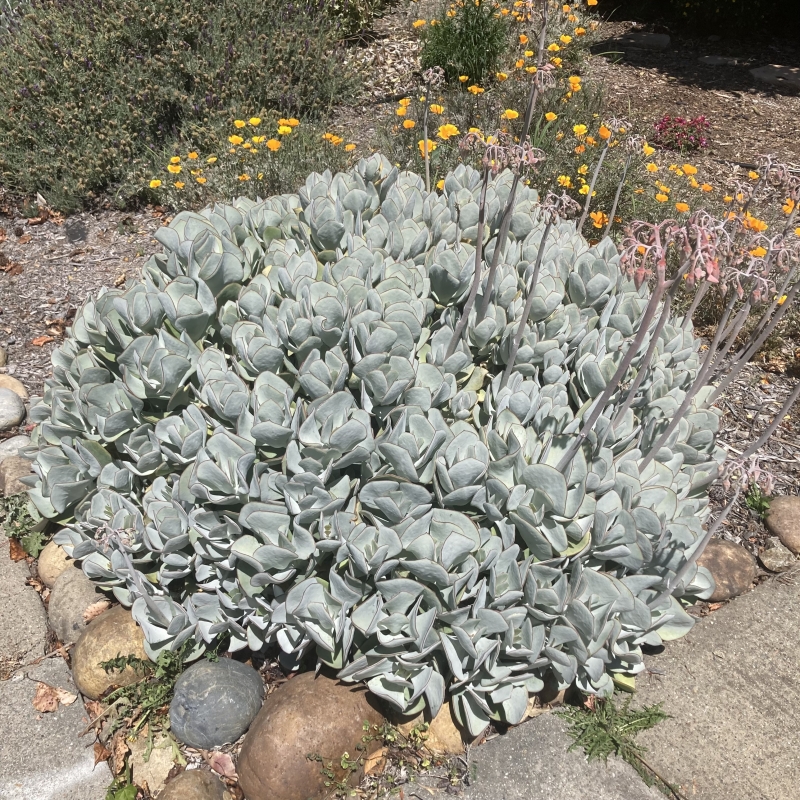

| height | 8–18in | |
| width | 1–2ft | |
| tolerates | Coast, Cool Summers, Drought, Deer , Fog, Gophers, Pots, Neglect, Salt, Wind | |
| water needs |
Lowest | |
| water info |
Being primarily from South Africa, cotyledons are particularly well adapted to California’s climate and are extremely drought tolerant, especially on the coast where they often need no supplemental water once established. They are tolerant of overwatering in winter, and of underwatering during summer. If you see your cotyledon begin to shrivel, lose firmness, or shed many of the lower leaves without replacing them, your plant is likely totally dry and should be watered. Remember that if kept in a small pot your plant will want more frequent watering. |
|
| hardy to |
25F | |
| exposure | Part Sun – Full Sun | |
| indoor outdoor |
Outdoor | |
| drainage | In Ground: Cactus Mix, In Pots: Cactus Mix, Tolerates Sandy Soil | |
| fertilizing | All Purpose, Low Needs | |
| origin | South Africa | |
| california native |
No | |
| sunset zones |
9, 12–24 |
Full Sun
Six or more hours of sun beams directly landing on the plant's leaves.
Part Shade
Three to five hours of sun beams directly landing on the plant's leaves.
Part Sun
One to two hours of sun beams directly landing on the plants leaves.
Full Shade
The plant is never fully lit by sun beams,
but is in a bright spot or has dappled sunbeams playing over the leaves throughout the day.
Deep Shade
The plant never has dappled light on the leaves, and is in a place that feels dim, even on a nice sunny day.
